Who would do such a thing???
From the Hayes Valley Farm (SF) blog:
Sometime between the late afternoons of Monday July 19 and Tuesday July 20, an unknown person(s) intentionally sprayed pesticide into the entrances and ventilation holes of the two San Francisco Bee-Cause (SFBC) honey bee colonies at HVF. The same person(s) tried to do the same to a third, smaller colony on site, belonging to Chris Burley.
it goes on:
The killing of the two mature SFBC colonies was complete. The thousands of bees that died immediately or rushed to the entrance for fresh air fell onto the screened bottom board and clogged up the entrance to the hive, making escape impossible for any of the other bees and turning each hive into a gas chamber. Chris Burley’s colony sustained a loss of approximately 60-70% of its individuals.
Check out the photos and read what Karen Peteros and Chris Burley were up to with their bee hives before this senseless and violent act of ignorance.
Each colony was healthy and thriving at HVF, and likely consisted of 60,000-100,000 individuals. Each was well on her way to producing 20-30 medium frames of honey that we planned to sell to support the work of SFBC (San Francisco Bicycle Coalition). The honey was to be extracted during a HVF Honey Extraction class to take place on August 1st and another to be scheduled for September/October. We will proceed with the Honey Extraction class on August 1st but we will extract honey produced by SFBC’s Alemany Farm hives.
Beyond the economic loss, however, is the emotional loss and the loss of educational opportunity the hives were to provide at HVF.
Everyone of course by now is familiar with Colony Collapse Disorder (CCD), sometimes also referred to as honey bee depopulation syndrome (HBDS), a phenomenon in which worker bees from a beehive or European honey bee colony abruptly disappear. While the cause (or causes) of this phenomenon are not fully understood, none of the growing number of local beekeepers that I know has reported any such collapse. It seems that whatever is causing the collapse on large scale, industrial bee colonies is not affecting local, neighborhood beehives.
Knowing how fragile the survival of bees is and how interlinked our own survival and well being is to bees, it boggles the mind that anyone would willfully annihilate a thriving hive. If there were any issues by neighbors you’d think there would have been several complaints filed, but according to Peteros the farm received only one known complaint since it began operating six months ago.
If anything, this sad incident only reaffirms how important the work of local beekeepers like Karen Peteros and Chris Burley is, not only in building local food systems, but in educating the public about where food comes from and the processes involved in getting it on our plates. The positive thing that could result from a travesty like this is that it’ll bring more attention to the importance of bees and the growing number of people who keep hives within our communities.
Speaking of whom, while I don’t keep any bees myself, I have many neighbors who do, and since I think one of the biggest concerns that people have about being near bees is being stung I’d like to share a few impressions that I hope will help explain “bee culture” a bit better and reduce some of the fear factor. As Peteros told the San Jose Mercury News:
“There’s not much we can do about it except use the opportunity to make the point that bees are not harmful. They are only interested in flowers. They are beneficial insects,” she said.
Let me introduce you to my friend John. He’s been a beekeeper in Oakland for several years now. As he’s gained more experience with the ins and outs of bees, he’s helped others in his community set up their hives. In fact, he’s become sort of a “bee ranger” who is on call when his neighbors’ bees swarm.

Swarming is the natural means of reproduction of honey bee colonies. A new honey bee colony is formed when the queen bee leaves the colony with a large group of worker bees. In fact, we once had our neighbor Chris’ bees swarm right into our backyard.


Swarming is mainly a spring phenomenon, usually within a two- or three-week period depending on the locale. The bees are usually not aggressive at this stage of their life cycle, as they’re just looking for a new home for their queen and lack a hive to defend. Sometimes they just leave when a beekeeper has been inattentive. That’s when John and his buddy get called in.
It’s as easy as 1, 2 3.
1. Get the bucket and mop handle ready

2. Locate swarm and shake bees into bucket
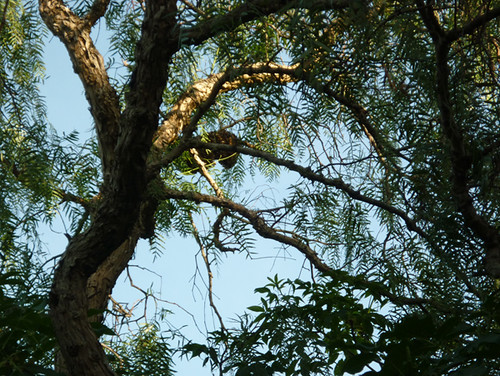
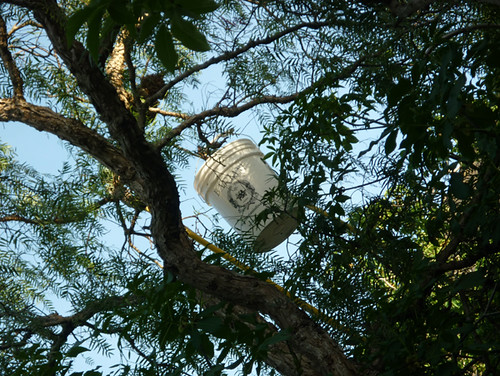
3. Put bees into box and return to hive

Local beekeeping may seem like a hip new thing to do, but to anyone who’s ever eaten with the least bit of wonderment about how the food got in their mouth it must be clear that beekeeping has been around for a while. A quick google search reveals that “On the walls of the sun temple of Nyuserre Ini from the 5th Dynasty, before 2422 BCE, workers are depicted blowing smoke into hives as they are removing honeycombs.”
It’s a tradition that’s very much alive and practiced around the world. On two of my recent trips to Europe I got to meet beekeepers in Schwetzingen, Germany…

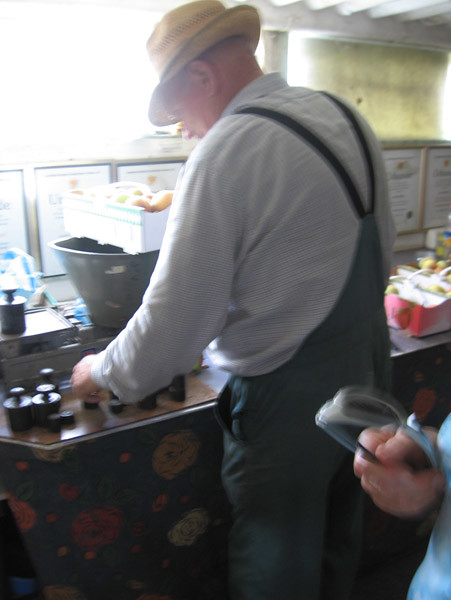
and at the slow food farmers market in Alba, Italy, in the Piemonte region


where the bees produce all kinds of honey, the most amazing one being the jar of Acacia honey that is to die for…
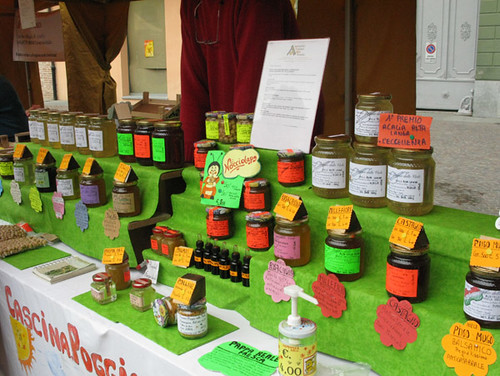
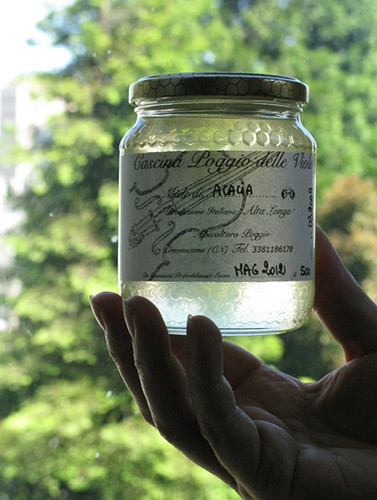
There’s so much more to say about bees, and there are folks who know a lot more about these amazing and mysterious creatures than I do, but I think they are very symbolic of our relationship with this amazing planet we live on and our interdependence with all our cohabitants. I think that much of the destruction of the ecosystem has happened because we’ve lost our awareness of how much we really still depend on this very intricate chain of relationships. In many cases we’ve become afraid of that which actually sustains us.
That’s why the work that Hayes Valley Farm and so many others are doing is so important. It helps us to see how nature actually works, something many of us simply didn’t grow up with. And the best way to confront our fear of the unknown is to get to meet the object of our fear. It’s not about blame or shame, but the ability to reclaim.
I’ll leave with that old Cree Indian Proverb:
Only when the last tree has died
and the last river has been poisoned
and the last fish has been caught
will we realize that we can’t eat money



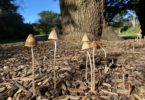




I saw a special on Nat Geo, I think, about the bees suddenly disappearing. It gave me chills when they said if all the bees die, all humans die.
That’s why it’s so hard to understand why anyone would poison the hives. They must be afraid of bees. I was stung multiple times by a hornet as a child and almost died. I’ve been jumpy around bees, also, ever since. And, it’s not fair to the lifegiving bees!
Bless all the people who work to support the bees and, therefore, all of life. Thank you for sharing this important news. It is the best that can be done with a tragedy.